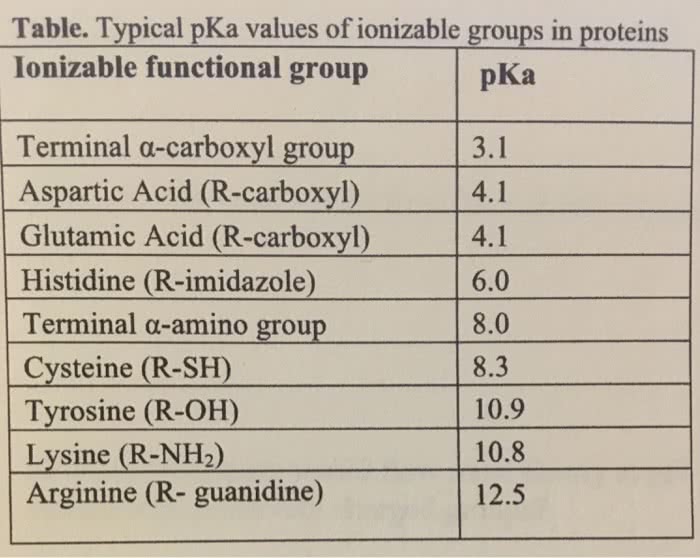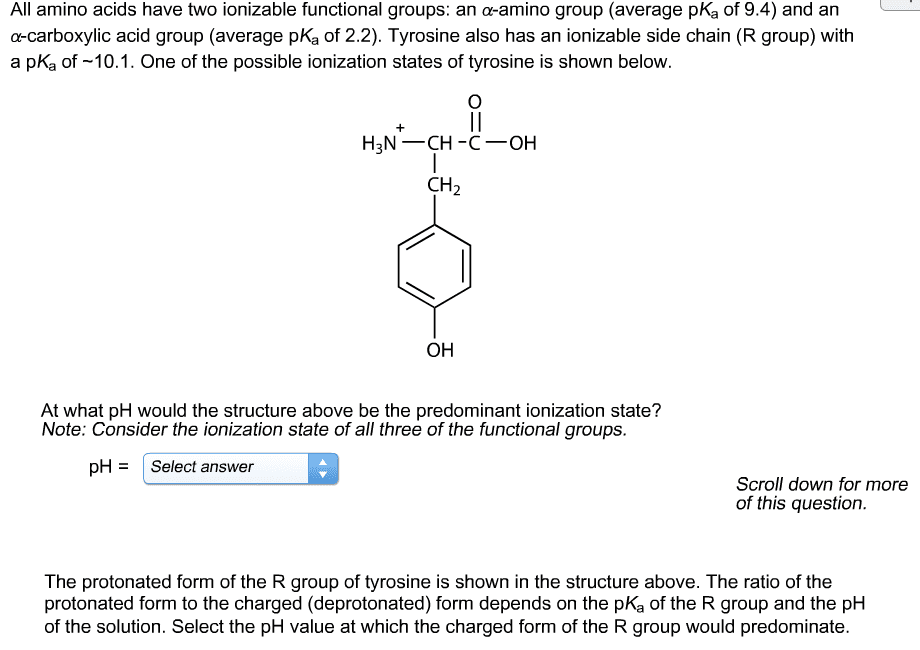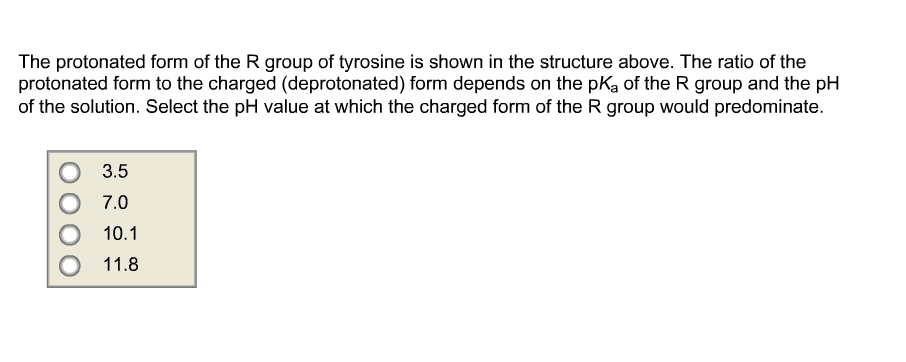A histidine residue in a protein has a side chain pKa of 6.3. Due to a conformational shift, an amino acid move into the close proximity of this histidine, shifting the histidine pKa to 5.7.
if the protein has the above histidine in it was in a solution of pH 6.5, what is the change in the net charge of this histidine (show all the calculation)?
what is the likely identity of the residue that causes the pKa shift for the above histidine residue? If there is more than one possible candidate, then list them all. Explain why these candidates cause the shift in the histidine pKa.
Extra Info:
equations: Vo = {Vmax [S]} / {Km + [S]}; pH = pKa + log {[base]/[acid]}; ÎG = ÎH - TÎS
pKa of the side chain R-groups are: D (3.9), E (4.2), H (6.0)' C (8.3), Y (10.1), K (10.5), and R (12.5).
pKa of amino acid α-amino group (9.60) and α-carboxyl group (2.10).
pKa of N-terminal oligopeptide a-mino group (7.40) and C-terminal a-carboxyl group (3.6)
A histidine residue in a protein has a side chain pKa of 6.3. Due to a conformational shift, an amino acid move into the close proximity of this histidine, shifting the histidine pKa to 5.7.
if the protein has the above histidine in it was in a solution of pH 6.5, what is the change in the net charge of this histidine (show all the calculation)?
what is the likely identity of the residue that causes the pKa shift for the above histidine residue? If there is more than one possible candidate, then list them all. Explain why these candidates cause the shift in the histidine pKa.
Extra Info:
equations: Vo = {Vmax [S]} / {Km + [S]}; pH = pKa + log {[base]/[acid]}; ÎG = ÎH - TÎS
pKa of the side chain R-groups are: D (3.9), E (4.2), H (6.0)' C (8.3), Y (10.1), K (10.5), and R (12.5).
pKa of amino acid α-amino group (9.60) and α-carboxyl group (2.10).
pKa of N-terminal oligopeptide a-mino group (7.40) and C-terminal a-carboxyl group (3.6)




